Menu
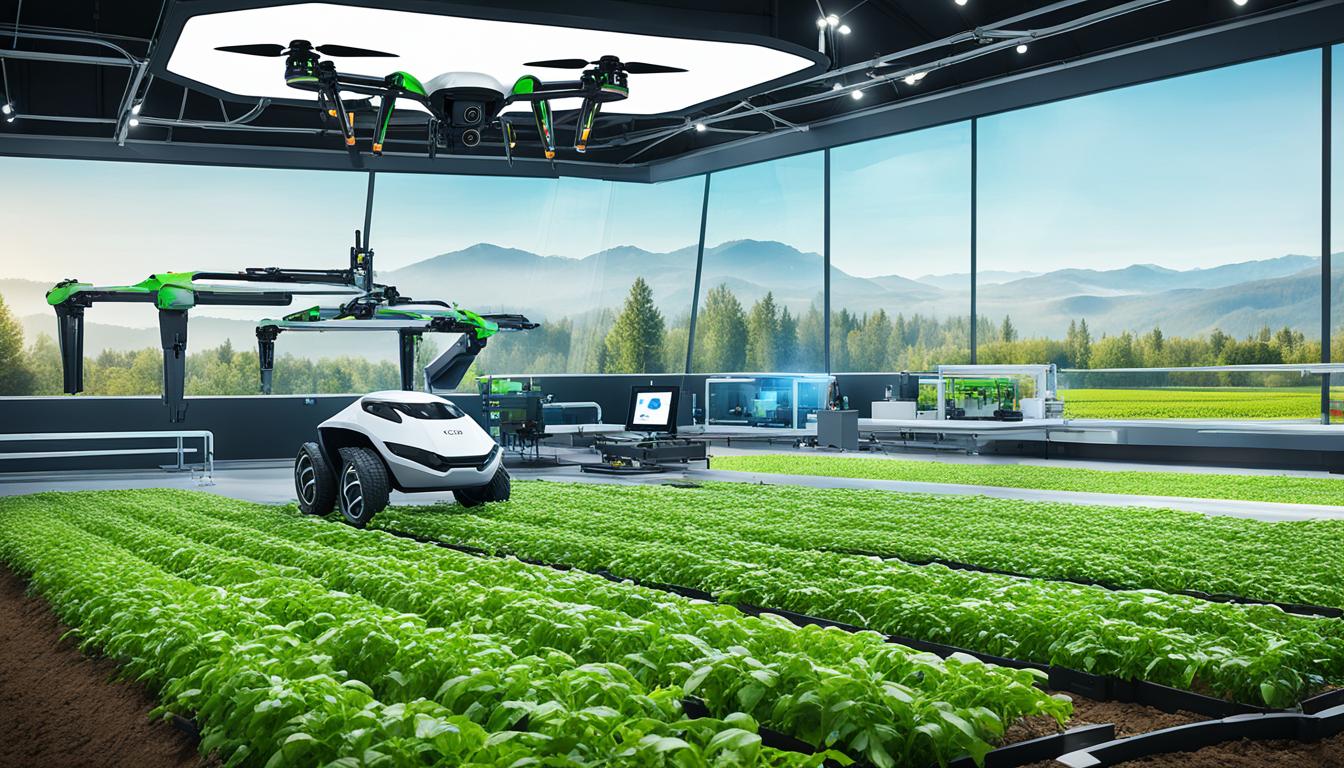
With the ever-growing challenges of climate change, more people, and food needs, how do new farm technologies make everything safer and better for the planet?
In 2024, farming has changed a lot. Now, using things like drones, robots, and smart devices makes everything safer. ICL and others lead this change, making sure we use resources well and keep our food supply strong.
New technologies are a big help. For example, they can know where machines are in an emergency. They can also tell when machines need fixing before they break down. This means we can use machines more safely and avoid dangerous places on the farm.
In modern agriculture, there are big global challenges. Now, the farming sector is getting ready for a big change. Companies like ICL are leading this change. They use digital tools and data to solve these problems.
Farm safety is more important than ever in farming today. Many new programmes and inventions are showing great promise:
A project in Pennsylvania called the Farm Worker Protection Safety Program is bringing these different efforts together. It focuses on safer use of pesticides. This makes sure farm safety is improving even in places like Pennsylvania. There are also new farming tools to fit these new Ag trends:
| Company | Innovation | Expected Release |
|---|---|---|
| Great Plains | New 60-foot bulk fill planter PL5906 | Spring 2025 |
| John Deere | 9RX largest tractor | End of 2024 – Beginning of 2025 |
| Kubota | Autonomous New Agri Concept tractor | TBA |
| Bobcat | AT450X battery-powered articulating tractor | TBA |
| Mahindra | Compact tractor market expansion | Spring growing season 2024 |
These new tools show how farming is changing with new technology. This is to make farming safer and better. Facing the tough challenges of farming today, these improvements are key to a safe and productive future in farming.
The agricultural world today is changing a lot because of tech innovation. Tools like precision agriculture and automated machines are making farming better. They help manage farms more effectively and in ways that are kinder to the environment.
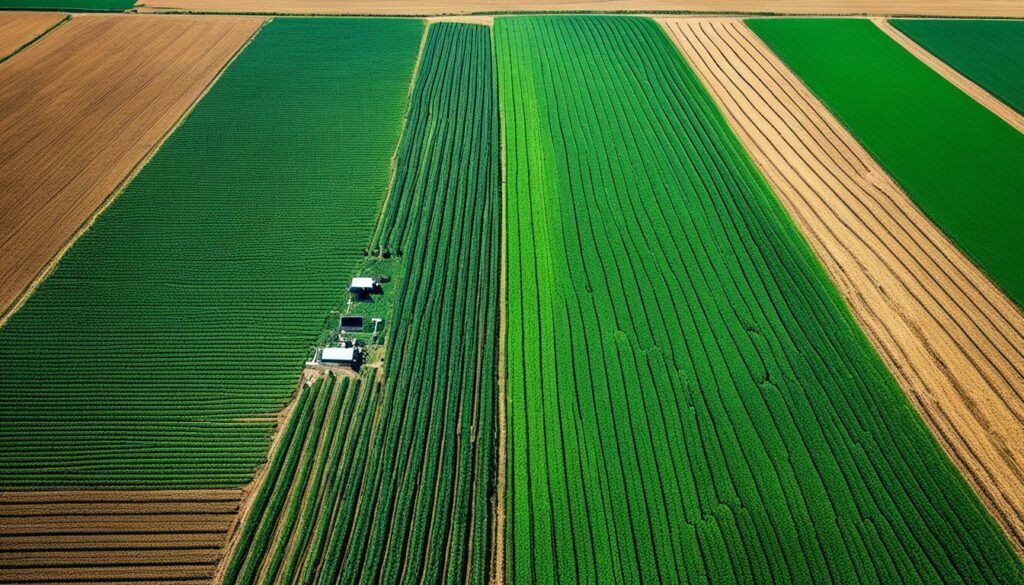
There’s a big change in how farmers look after their land, thanks to precision agriculture. With GPS, farmers can use live location data for better control and safety. Machines on farms now have MTG technology to send their exact locations in an emergency, making help come faster. Also, these machines can alert farmers of possible issues before they cause big problems, cutting down on stress and time lost.
“Precision agriculture tools allow for better management of field plans and integration of historical data, which improves overall farm safety and productivity.”
Tasks like turning and tracking are now automatic, which means fewer quick decisions to make. This helps not only with getting work done faster but also with making farmers feel less mentally drained.
Today, farm tools do a lot more to keep operators safe, including agricultural robots. They have features like reminders to avoid common mistakes. For example, they can warn if the operator is not sitting safely while the machine is running.
There’s also tech like geo-fencing to track how machines are used. This helps spot any strange activities and keep the machines working safely. It’s a big step in using tech to both improve farming and keep everyone safe.
The precision agriculture field is growing and expected to be worth a lot by 2025, showing the importance of these new tools. By adopting these technologies, farming is becoming safer and more efficient. This is key for future farming that’s both productive and good for the planet.
Our move to digital farming is changing the game. It’s all about using smart tech to watch the farm in real time. This shift has made farming smarter and more responsive. Leaps in tech, like IoT, are key. They’re boosting farm decisions with sharper, precise data.
IoT tools in farming keep an eye on important things like soil and plant health. Take Dr. Lie Tang’s PhenoBots for example. They snap loads of plant pics, making it easier to see how they’re doing. Farmers can make quick decisions thanks to the instant data these tools provide.
Farmers now track their animals with RFID and feed them automatically. Dr. Joshua Peschel’s work with cameras can spot sick animals. Both of these methods help farms run more smoothly.
Monitoring the environment is a big deal in modern farming. It helps predict weather, check soil, and look after plants. Using GIS is key to seeing how farms might need to change. Plus, drones and autonomous tractors collect a ton of useful data. This helps farms work better and produce more.
With ARA’s tech, farm vehicles can quickly share lots of data with the cloud. This data makes decisions better and helps farms act fast when problems come up.
| Technology | Function | Benefit |
|---|---|---|
| PhenoBots | High-volume image data capture | Enhanced phenotyping accuracy |
| LaView Cameras | Video-based animal health monitoring | Improved management of livestock health |
| GIS Software | Depicting and predicting agricultural changes | Better yields and resource management |
| URLLC by ARA | Streaming high-volume sensing data | Immediate data analytics and decision making |
Technological advancements are changing how safe farms are. They bring new ways to farm, as seen at the Commodity Classic in Houston, Texas. There, farmers saw drones, robotic harvesters, and AI that helps grow crops better. These tools make a big difference for today’s farms in many ways.
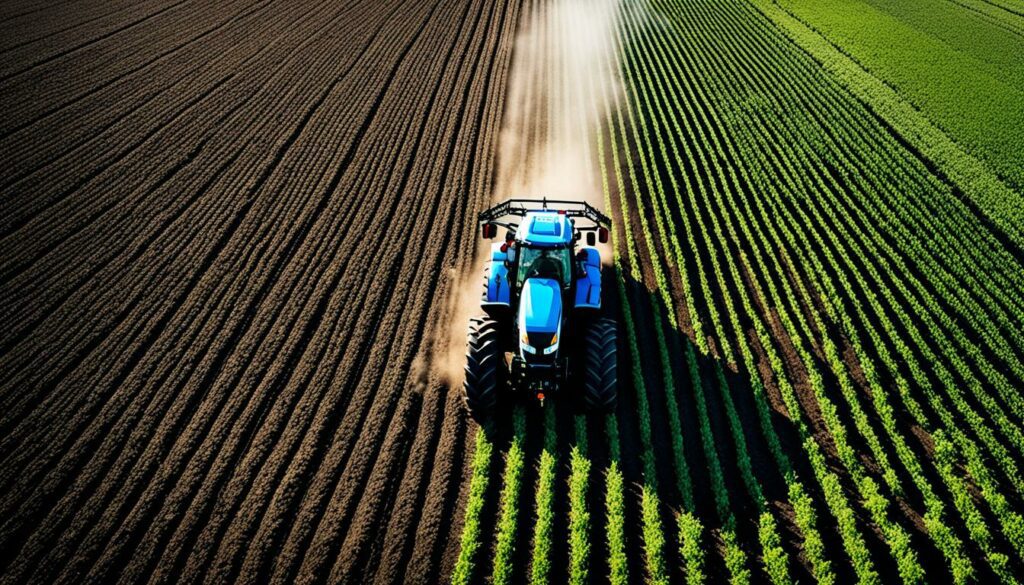
The arrival of AI in farming is a big deal. It helps farmers look at crop and soil health better and faster, cutting down weeks to almost no time. Fancy AI technology in farming machines starts to help them move on their own and do tasks such as planting and spraying. This shows how important AI is in making farming better with more accuracy and less waste.
Robotic harvesters are a step towards more automatic and efficient farming. They do the work of harvesting more accurately and with less need for people. Using robots to farm indoors can mean growing more food in the same space. While this is exciting, the Farm Bureau stresses the need to use AI in a fair and clear way. They aim to ensure that by 2050, farms could use a lot of data every day to decide on the best actions and improve how they work.
| AI Applications | Benefits | Statistics |
|---|---|---|
| Predictive Analysis | Increase in Data Processing Speed | Instant Analysis |
| Robotic Harvesters | Increased Yields per Square Foot | Up to 10 Times |
| Autonomous Navigation | Optimised Resource Management | 4.1 Million Data Points Daily by 2050 |
The dairy sector has made big strides in how it looks after animals and uses technology. It now uses various kinds of tech to watch over animals. This includes sensors that keep track of their actions and health. They collect a lot of data to help understand how the animals are doing.
We’ve seen a big step forward in how we use biosensors and tech that animals can wear. This lets farmers spot health issues in their animals early, which helps them save money. But, there’s still work to do in making these early health checks cheaper.
Focusing on biosensors is also helping to spot diseases early. This helps make sure cows stay healthy. Using this tech means farmers can keep a close eye on their animals. They can see little changes before they get sick, helping the animals stay well.
It’s very important to quickly know when cows are ready to have babies. This is key for farms that use artificial insemination. Also, this tech can show if animals are starting to get sick. Catching illnesses early saves money and helps animals stay productive.
Modern systems for keeping watch on animals are a big deal in agricultural technology. They show a commitment to keeping animals well. This area keeps getting better, offering new ways to keep animals safe and healthy, using the latest tech.
| Aspect | Benefit |
|---|---|
| Automatic Monitoring of Indicators | Improved health and welfare insights |
| Biosensors and Wearable Technology | Early disease detection, reduced economic losses |
| Continuous Observation | Early identification of subtle changes |
| Proficient Estrus Identification | Enhanced reproductive performance |
| Early Disease Diagnosis | Reduced treatment costs and increased productivity |
Find out more about how these systems help with animal welfare and farming. Check out this detailed resource for more information.
Using sustainable farming is crucial for making farms more productive and safe. It involves methods like regenerative agriculture and using water wisely. These help the environment and cut down risks on farms.

Regenerative farming works to heal the soil and boost plant and animal life. It uses smart grazing, not tilling the soil, and less chemicals. These actions make the soil better and help it deal with different weather, making farming safer.
“In 2018 in the United States, 146 individuals were fatally injured while working with or near tractors,” showing how crucial safer farming is.
By using regenerative farming, the need for big machines can drop, lowering the risk of accidents. This is part of efforts by groups like Safe Work Australia and the EU to create safer rules. New technologies, like sensors that monitor in real-time, help to keep farming safer.
Keeping water use smart is key for farming that doesn’t harm the earth. Drip irrigation and high-tech sensors help save water. This way, farmers can grow more food while using less water.
These smart systems lower the farm’s impact on nature and keep the work area safe. They also prevent crop and farmer danger from too much or too little water.
Following all these sustainable farming methods helps keep agriculture safe and earth-friendly.
| Safety Organisation | Region | Focus |
|---|---|---|
| Safe Work Australia | Australia | Workplace Health and Safety |
| EU-OSHA and EFSA | European Union | Occupational Health and Safety |
Smart farming tools are now essential in agriculture, making both work and workers safer. Technologies like GPS and automation are changing farming for the better. They help farmers work more efficiently and with less risk.
GPS and auto-trac systems are transforming how farming is done. They help manage tractors more accurately, making farming safer. These tools are part of a big network called the SmartFarm Innovation Network. It offers support and innovations like GeoVine for safer and more efficient vineyard work.
GPS-guided electrical tractors are also a big step. They help reduce the risk of exposure to harmful chemicals. Leaders in the field say this is crucial for keeping workers safe while working in the fields.
Automation is another key to making farming safer. It means less need for people to do dangerous jobs. Innovations are being developed on campuses focused on meeting farming’s new needs.
Imagine an autonomous robot measuring crop growth or a tractor that has a “Safe Mode.” These advances use AI to keep work areas safe and reduce the chance of mistakes.
There’s also a “rumen robot” and autonomous crop measurement robots. They show that farming is moving towards being automated and, therefore, safer.
| Innovation | Benefits |
|---|---|
| GPS Technology | Reduces terrain-related risks and enhances precise tractor management. |
| Auto-Trac Systems | Minimises manual intervention and optimises resource use. |
| AI Integration in Tractors | Prevents collisions and enhances overall field safety. |
| Autonomous Robots | Automates tasks like crop growth measurement, reducing human errors. |
In the end, smart farming’s mix of tools, GPS, and automation is leading to a safer agriculture world. With ongoing innovation in these areas, the farming sector is ready to face new challenges. This ensures the safety and efficiency of farming work.
The latest in crop management tech helps farming be more eco-friendly and productive. It uses new ideas like no-till farming and less chemicals. This leads to better crops and healthier soil.
No-till farming is a big step forward. It means planting crops without ploughing the soil. This reduces soil erosion and protects the soil’s nutrients. It also saves water and reduces carbon in the air. Vertical farms, for example, use much less water than usual farms. This shows how new ways of farming are good for the planet.
Using fewer chemicals is another key tech change in farming. This protects the environment and keeps soil healthy. Also, with precision farming, farmers can better adjust their fields. This includes checking moisture, soil, and local weather more closely. The precision farming market is set to grow to $43.4 billion by 2025. Also, blockchain is making food safer by tracking its journey from farm to table.
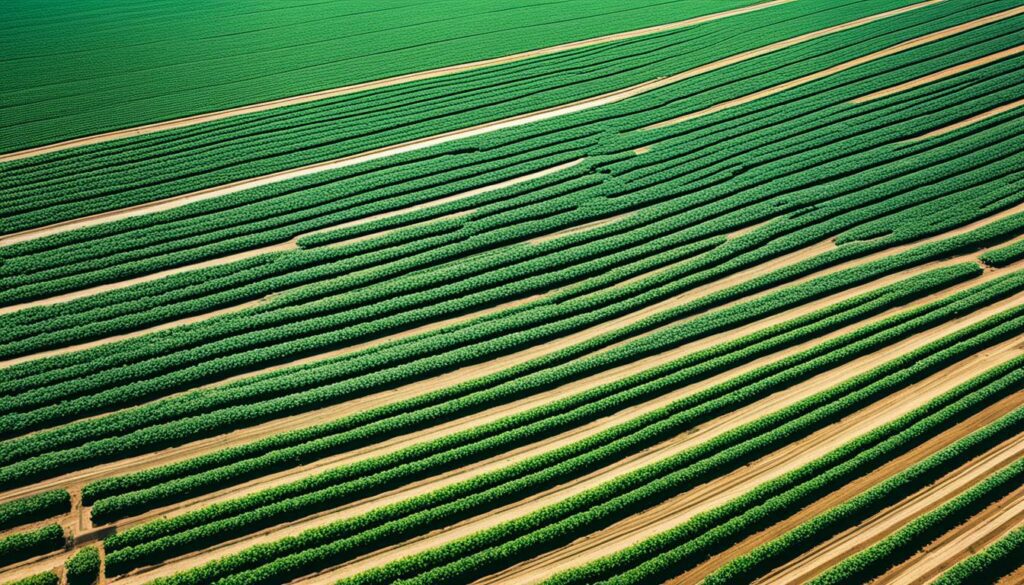
| Metrics | Traditional Methods | Modern Techniques |
|---|---|---|
| Water Usage | High | 70% Less |
| Soil Erosion | Frequent | Minimized |
| Carbon Emissions | Increased | Reduced |
| Yield Output | Inconsistent | Optimized |
| Soil Fertility | Depletes | Enhanced |
Using these new farming technologies can make farming better and greener. No-till farming and using fewer chemicals are key. They point the way to making farming ready for the future.
Farm safety is crucial and needs careful planning to avoid risks. Today, farms are more business-oriented, making safety very important. By educating farm workers and having plans for emergencies, dangers can be reduced.
Good plans to prevent risks can lower the number of accidents on farms. For example, in 2018, 146 people died while working with tractors in the U.S. This highlights the need for proper farm safety training. These training programmes give farmers and workers the skills to stay safe and avoid risks in their daily work.
Safe Work Australia supports the development of safety culture in farms. By providing resources and training, they aim to lower risks from chemicals and equipment. It also helps manage farmers’ different attitudes towards risk through education.
Emergency systems are essential in case of accidents. They include quick ways to communicate, having first aid ready, and knowing how to leave safely. Such a system makes sure people are prepared and can act fast, protecting lives and the farm’s work.
Devices like sensors and drones are key in emergencies, offering live alerts. They spot danger early, allowing quick responses, thus making farms safer. Because of dangerous chemicals, emergency plans have to consider both human and environmental safety.
Extending help to farmers, especially in managing risks, is crucial. These experts blend safety and emergency procedures with daily farm work, ensuring a complete risk mitigation approach. Using precise data helps in making smart decisions about managing risks.
| Source of Risk | Type of Risk | Examples |
|---|---|---|
| Production | Biological Processes | Weather changes, pests, diseases |
| Marketing | Market Price Fluctuations | Demand and supply shifts |
| Financial | Economic Factors | Interest rate changes, equipment breakdown |
| Institutional | Policy Changes | Government regulations |
| Human | Health and Labour | Labour supply, health risks |
In the changing world of farming, mental health is a big deal. We’re focusing on new ways to keep farmers healthy and safe. It’s important because good mental health helps make farming better for everyone. Tara Haskins, with 33 years of clinical work, leads efforts to help farmers deal with stress.
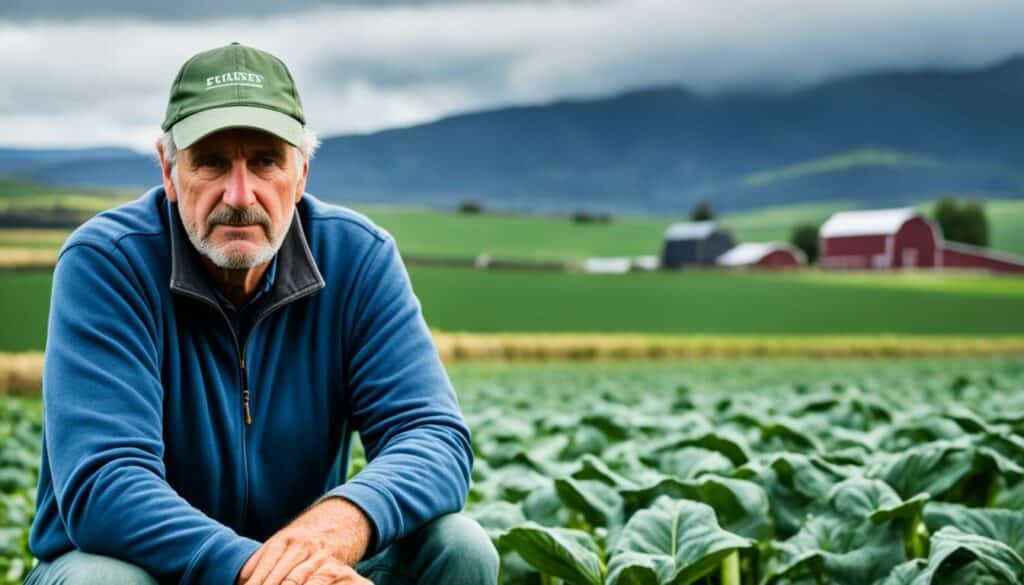
Dr. Jewel H. Bronaugh is working hard in Virginia to help farmers with their mental health. She started the Farmer Stress Task Force in 2019. This group works with agricultural and health agencies to support farmers.
“The male suicide rate among farmers and ranchers was 43.2 per 100,000 in 2016, compared to 27.4 per 100,000 among male working-aged adults across all occupations,” as reported in the 2020 Morbidity and Mortality Weekly Report (MMWR).
Joan M. Mazur, from the University of Kentucky, works on keeping farmers safe and healthy. Her work shows the importance of helping farmers with their mental health. This helps lower stress and improves farm safety.
Sean Brotherson, from North Dakota State University, has found some worrying facts. Farmers face high risks of death from stress-related diseases like heart problems. This shows we must act fast to help farmers manage stress for better health and safety.
| Statistics | Findings |
|---|---|
| Male Suicide Rate in Agriculture (2016) | 43.2 per 100,000 |
| Suicide Rate in All Occupations (2016) | 27.4 per 100,000 |
| Veterans in Agriculture | 370,019 |
| Veterans with More Than 10 Years on Farm | 294,974 |
| Prevalence of Mental Illness in Rural vs. Urban Areas | Higher in Rural Areas |
Farming communities often face more mental health challenges compared to cities. This underlines the need for strong mental health support. The AgriStress Helpline offers support in many states, including Colorado and Texas.
The National AgrAbility Project and SAMHSA (1-877-SAMHSA7) are important. They offer mental health help and advice. This support is crucial for farmers and everyone working in agriculture to stay mentally healthy.
Training is vital for people to manage safety in farming well. The AGRIMEDIC and RF-DASH efforts are key for rural safety.
First responders learn the unique aspects of farm emergencies through AGRIMEDIC. Areas like Louisiana and Mississippi greatly benefit. Since it started, AGRIMEDIC has trained 810 responders, making farms safer.
RF-DASH helps firefighters and EMTs understand farm safety deeply. Over 80 of them have learned from this effort so far. It makes rural response to farm incidents stronger, helping keep farms safe.
Targeted training like AGRIMEDIC and RF-DASH is essential for farm safety. They work on preventing and responding to dangers. These programmes improve the safety approach in farming overall.
| Programme | Target Group | Participants Trained | Geographical Focus |
|---|---|---|---|
| AGRIMEDIC | First Responders | 810 | Louisiana and Mississippi |
| RF-DASH | Firefighters and EMTs | Over 80 | Rural Communities |
Digital twins are changing farming by creating detailed copies of farm processes. They use generative AI to help farmers make better predictions. Studies show that these tools improve how much we farm and protect the environment.
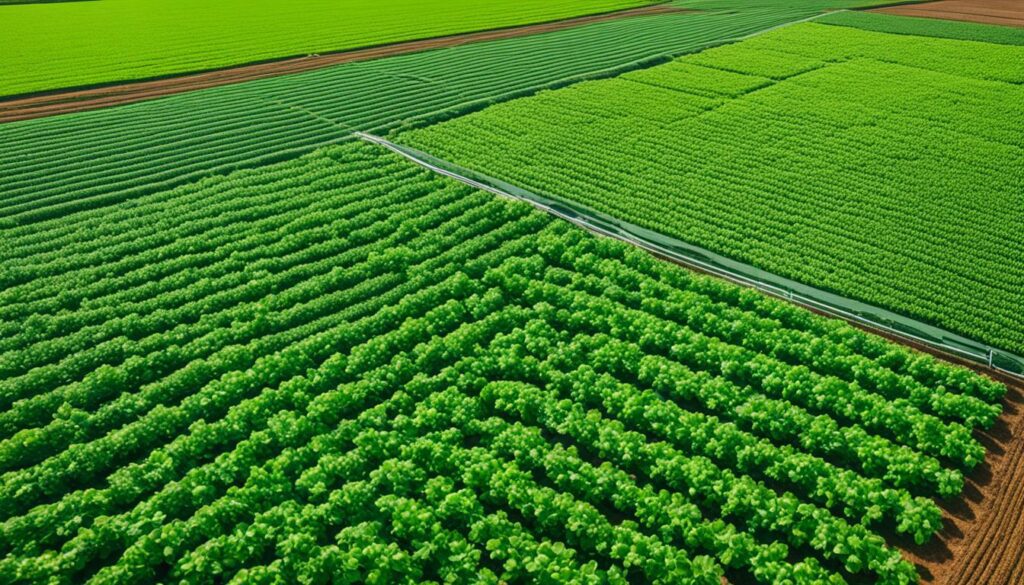
A key benefit of digital twins is increasing crop yield through AI’s learning process. In farming, where conditions are complex, this is invaluable. It models how factors like soil and weather affect the harvest, helping find the best ways to grow crops.
They also help with careful farming by watching over production closely. Sensors and cameras check on things like the temperature. This helps keep crops healthy. It also fights against global issues like food loss.
Yet, using digital twins isn’t easy for everyone. Many face challenges in getting started, especially in poorer areas. These places often lack the knowledge and tools needed. It shows we need to work together to help everyone benefit from these technologies to fight hunger and food waste.
A new field called AgTech uses digital twins to simulate crops under stress. This shows what crops do well under various conditions, without actually planting them. It helps lower the negative effect farming has on the planet.
In factories, digital twins are crucial for watching when ingredients arrive and stop waste. This fight against food loss is important worldwide. It helps make sure we use our resources well.
The bond between digital twins and generative AI is key for farming’s future. They give farmers tools to guess and watch over their farms. Investing in AgTech is important for moving past challenges and making these tools common.
| Technology Aspect | Implication |
|---|---|
| Reinforcement Learning | Maximises crop yield through complex decision-making. |
| Smart Sensors | Monitors temperature and humidity for precision agriculture. |
| Virtual Crops | Evaluates traits or risks under different conditions to reduce carbon footprint. |
| Ingredient Delivery Monitoring | Minimises food waste in smart manufacturing plants. |
| Multidisciplinary Collaborations | Addresses deployment barriers in lower-middle income economies. |
The use of connected machines in farming improves both safety and efficiency. There’s a big jump in how safe farms are because of technologies like the Module Telematics Gateway (MTG). It and remote machine monitoring have changed how people look after their gear. Now, safety has reached new heights.
Putting an MTG in farming gear lets operators know where their machines are in real time. This is super important in emergencies. Quick data sharing means quick tracking, which can save lives. Plus, the MTG can pick up on dangerous moves, like if the operator steps away while the machines are running. It can then automatically warn them. This sharpens safety rules.
MTG helps farmers see how their fields were worked on before. This improves how they manage their land. It’s not just about data, though. The GPS in these machines makes farming on rough land safer. This use of GPS cuts down on accidents from bumpy or tricky terrains.
Monitoring machines from afar is a must-have for today’s farmers. This tech gives a lot of info about how, when, and where machines are used. It sets up virtual fences, tracks operation times, and even warns about needed fixes before things go bad. This heads off sudden breakdowns, lengthening a machine’s life.
It’s not just about taking care of machines. This technology gives up-to-the-minute info on costs, jobs left to do, and the weather. This lower stress and helps farmers do their work better. They can react quickly and wisely. This means better farm management and more peace of mind.
| Technology | Advantages |
|---|---|
| MTG | Real-time geolocation, automatic alerts, historical data analysis |
| Remote Machine Monitoring | Geo-fencing, operating-time monitoring, preventative maintenance |
| GPS Systems | Reduction in terrain hazards, improved efficiency |
Connected machines are a big step forward in farming. They make it safer, more efficient, and easier to control. Using these new tools, the agriculture sector is getting better at its job. It’s good for workers, the land, and it keeps things going strong. These technologies are making a big difference.
Looking at successful farm safety examples is very instructive. We learn about new safety ideas in farming. The Farm Dinner Theatre and the Tomah Hearing Loss Prevention Outreach are two such examples. They’ve helped promote farm safety through fun and educational methods.
The Farm Dinner Theatre is a clever way to teach about farm safety. It uses plays to make safety education fun and memorable. Those who saw the shows were more likely to change their safety habits. This shows how powerful storytelling and group activities can be in teaching safety.

Protecting against hearing loss on farms is very important. The Tomah Hearing Loss Prevention Outreach is a great example of this kind of forward-thinking health project. Between 2014 and 2019, the team gave out over 16,000 earplugs. They aimed to protect farmers’ hearing in loud farm settings. This effort is key in keeping farmers safe while they work.
| Program | Key Focus | Outcomes |
|---|---|---|
| Farm Dinner Theatre | Interactive educational plays on farm safety | Increased implementation of safety changes among farmers |
| Tomah Hearing Loss Prevention Outreach | Distribution of ear protection to prevent hearing loss | Over 16,000 pairs of earplugs distributed, improved auditory health |
These farm safety case studies show the value of creative education. They tackle dangers like machinery accidents and hearing loss. Examples like the Farm Dinner Theatre and Tomah Hearing Loss Prevention Outreach greatly boost farm safety.
Keeping farmers safe is key for their own health and the future of farming. They need to learn how to use chemicals safely. This is very important for keeping everyone safe and protecting the environment.
Farmers should have training on how to handle and use chemicals. Groups like the USDA and CDC’s NIOSH help with this. They offer resources and training. This helps keep farmworkers safe from chemicals and saves the environment from harm.
It’s also vital to check regularly for risks and to follow strict rules about chemicals. These efforts keep farmers safer at work. They lower the chances of getting hurt by dangerous chemicals.
| Safety Measure | Impact |
|---|---|
| Comprehensive Training Programmes | Informs farmworkers about safe handling and application techniques. |
| Regular Risk Assessments | Identifies potential hazards and develops mitigation strategies. |
| Compliance with Pesticide Regulations | Ensures the safe application of chemicals and reduces environmental contamination. |
Using protective gear like gloves and respirators is also very necessary. It keeps farmers safe from chemicals. Making a strong safety focus on the farm helps a lot. This protects workers and the farm itself. Groups like OSHA and EPA watch that these rules are followed.
In the end, safe use of chemicals in farming protects both people and the environment. This is even more critical with climate change threats. So, safety and following rules in farming are crucial for the future.
The future of farm safety looks very bright as new, sustainable technologies keep evolving. By 2024, it’s obvious that technological advancements in farming do more than improve how we work. They also make farming safer. This is helping agriculture face climate change, growing populations, and the need for strong food systems better.
Many efforts are being made to keep farmers and farm workers safe. The FARM Program has helped over 3,500 farmers keep their businesses going. Over 80 firefighters and EMTs have been trained to teach others in RF-DASH, a safety programme. Programmes like the Pennsylvania Rural Health Farm Worker Protection Safety Program and Tomah Hearing Loss Prevention Outreach are also key. They make sure people know about dangers like pesticides and how to protect themselves. For example, the Tomah Outreach gave out over 16,000 pairs of earplugs from 2014 to 2019.
Farm safety programmes, like AGRIMEDIC, are really important. For instance, AGRIMEDIC has trained 810 first responders to deal with farm emergencies. Engineering has also played a big part in making farms safer. In fact, from 1992 to 2015, engineering reduced fatal farm accidents by 63%. These achievements show why it’s vital to invest in safety technology for agriculture. This benefits farming globally and helps us all have a safer, more reliable food system. Bringing together technology and safety not only sparks new ideas but also encourages a strong sense of care and quality in farming communities worldwide.
The top safety innovations for 2024 are precision agriculture tools and automated machinery. Also, sustainable farming methods and advanced livestock monitoring make the list. All these reduce risks and make farms safer.
Modern farming is using AgTech and sustainable ways to fight climate change and feed more people. By using precision tools and digital techniques, farmers manage resources better. This boosts their productivity.
Tools like drones, IoT, and GPS give farmers data in real time. This lets them avoid dangerous situations and use resources better. It cuts down on harm to the environment too.
Automated machines do risky tasks, keeping people safe. They work without breaks, making farms more efficient and safer.
IoT and sensors watch over soil, crops, and the environment all the time. This lets farmers check on their fields from far away. Finding problems early helps avoid risks and improve farming.
These systems watch over weather, soil, and air. Farmers get up-to-date info, helping them keep crops safe and work in a secure area.
AI predicts farming risks before they happen. By forecasting weather and pest risks, it keeps farms safer and more productive.
Robotic harvesters pick crops safely and more efficiently than by hand. They work a lot, gently, reducing damage to crops.
Tracking tools now watch over animal health and behaviour. They help farmers step in quickly if there’s a problem, making sure animals are well and farms are safe.
Regenerative farming and using less water and chemicals keep soil safe. This makes life better for farmers and protect the environment. It boosts long-term farm success too.
GPS and auto-trac give precise tractor guidance, reducing accidents and working better in fields. They cut risky tasks for people too.
By using no-till farming and less chemicals, the soil is healthier and safer. This makes farming safer and more sustainable.
Good farm safety training, emergency plans, and constant monitoring are vital. They keep farming communities safe from dangers and ready for any emergencies.
New innovations help farmers deal with stress and make better decisions. They spot stress signs early and offer mental health help. This takes care of farming health and safety in all ways.
Programmes like AGRIMEDIC and RF-DASH train responders for farm accidents. They learn how to handle emergencies, making farming safer for everyone.
These technologies simulate and predict farm processes, helping with decisions and making farming safer. They are a step forward in modern and safe farming practices.
Connected machines share where they are and how they’re doing in real time. This information keeps operators safe by warning them of dangers and reminding of maintenance.
Studies show that plays and health check-ups make farms safer. By teaching safety in a fun way and checking on health, they prevent accidents.
There are projects teaching about caring for chemicals and following safety rules. They aim to keep farm workers healthy while using chemicals safely.